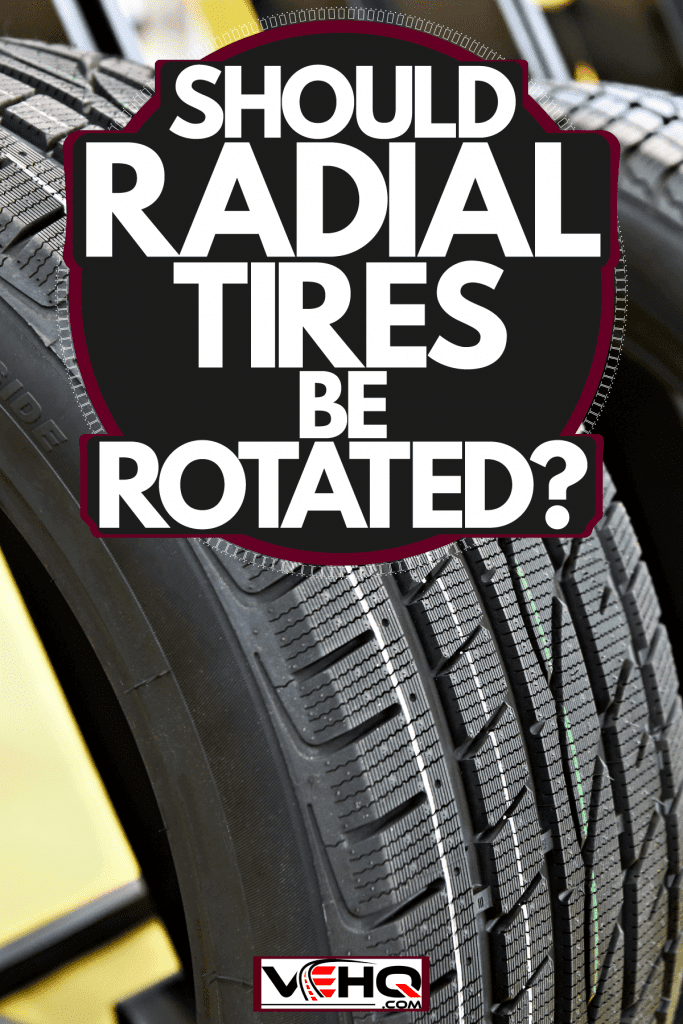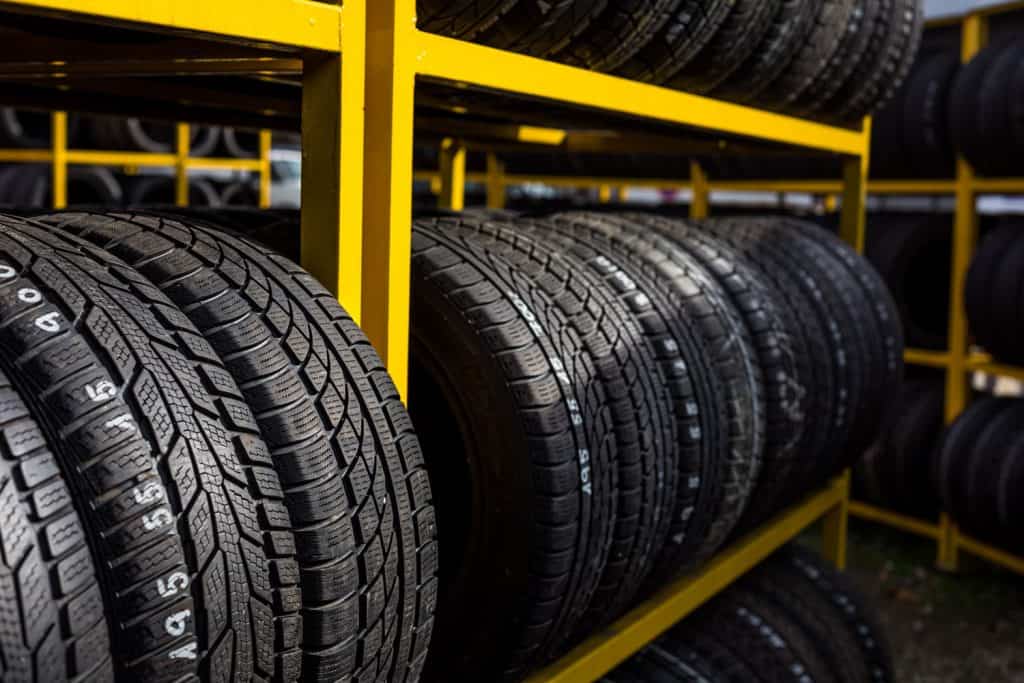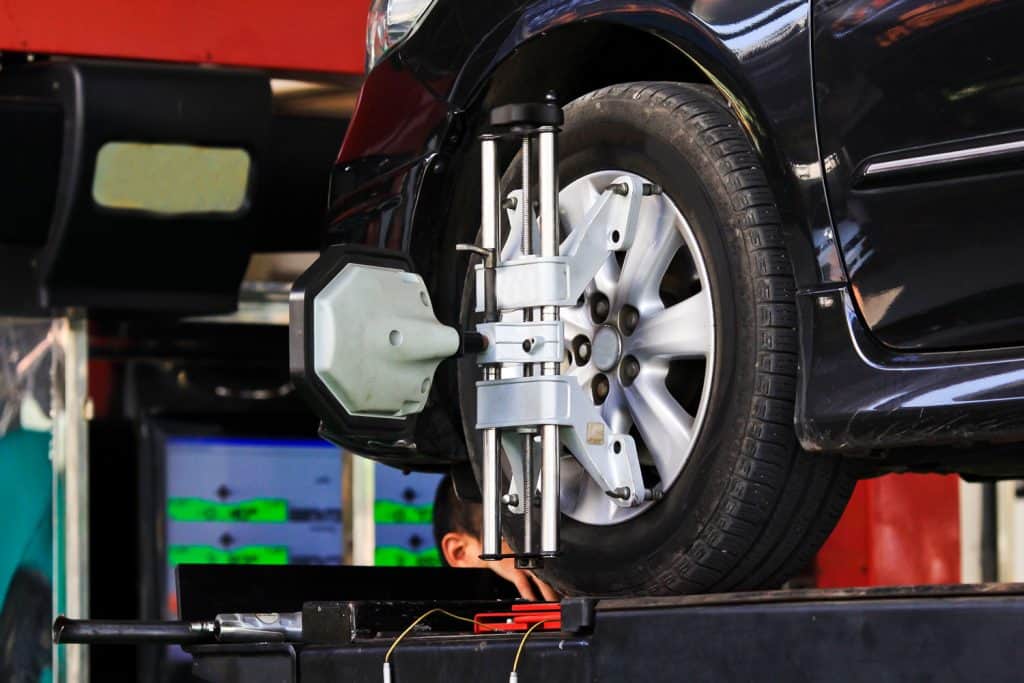Proper maintenance of your vehicle is a lot more than just oil and filter changes. One often-overlooked bit of maintenance involves your tires. Making sure your tires are properly inflated, as well as checking the tread wear, should be an essential part of your maintenance routine. You've probably been told that tires should be rotated regularly. But what if the tires are radial? We examined radial tires from numerous professional sources so that you'll know for sure if they need to be rotated.
Experts recommend that radial tires be rotated regularly.
Now that we know that you should rotate your radial tires, we'll take a closer look at the tires themselves. You might also be wondering if it's OK to cross rotate radial tires or how often radials need to be rotated. Perhaps you're curious if tires can impact your vehicle's alignment. For the answers to these questions and more, read ahead in this post to see what our research has uncovered.

What are radial tires?
The radial tire has become the most common replacement tire for consumer vehicles. Also known as a two-part tire, radial refers to a specific type of design. In a radial tire, cables plies are placed radially (at a 90-degree angle) from the center of the tire. Overlaying the top of this cabling is a belt that forms a thick layer of pliers.
Radial tires are engineered to be more durable and to provide a more comfortable ride. Having radial tires on your vehicle means you have a type of tire to last a lot longer. These tires are made with a sturdy steel belt layer, giving them more protection against sidewall damage.
There are many ways that radial tires can be rotated, and knowing which method of rotation you should use will depend upon several factors. Ahead in this post, we'll look at each one so that you can determine which one is right for your vehicle.
Do you need to rotate radial tires?
As we pointed out earlier in this post, radial tires should be rotated. Tires will wear out differently based upon their location on your vehicle. Rotating the tires regularly will even this out. Rotation will cause more even treadwear and will make your tires last longer.
For more information on why you should rotate your tires, Cars.com provides comprehensive reasons to have this maintenance task performed.
How often should radial tires be rotated?
The frequency of radial tire rotation will vary from brand to brand. Ideally, you'll want to ensure that you are getting your tires rotated no less than every 7,500 miles. Some tire manufacturers will recommend doing this at 5,000-mile intervals, however. Before you put too many miles on your tire, it's a great idea to check the manufacturer's guidelines and then make sure they are followed exactly as they have laid them out.

You can rotate your radial tires at home if you have a jack and a set of four jack stands. Most people prefer to have their tires rotated by professionals, though. It's a lot faster and safer to take your vehicle to the dealership or a tire store to get this done.
Additionally, tire rotation can be done when you need other routine maintenance performed on your vehicle. This makes your maintenance schedule easier to accomplish and much easier to adhere to.
What way should radial tires be rotated?
There are four different ways that tires can be rotated. Radial tires can be rotated in any way, depending upon the type of tires and the type of vehicle. Let's look more in-depth at the different methods of tire rotation.
Four-wheel rotation
This type of rotation is preferred for both front-wheel drive and all-wheel drive vehicles. If you have a rear or four-wheel drive vehicle, the rear tires are moved ahead to the front, rear left to front left, rear right to front right. The front wheels, though, go to opposite rear sides. The front right is moved to rear left, the front left is moved to rear right.
Should you have a front-wheel-drive or an all-wheel-drive, the movement is the opposite. The front tires are moved to the back, front right to back right, front left to back left. Then, the rear tires are moved to opposite sides, rear left to front right, rear right to front left.
This method can only be done if you have non-directional tires.
Five wheel rotation
This method of tire rotation involves rotating your full-sized spare tire. In a rear-wheel or four-wheel drive vehicle, you're following the same pattern as four-wheel rotation. You move the spare to the front right and place the rear right on the spare tire mount.
In a front-wheel-drive vehicle, the spare is moved to the front right, and the rear-left tire is moved to the spare tire mount.
Straight rotation
Straight rotation is moving the front tires to their corresponding rear sides. Front right goes to rear right; front left goes to rear left. This is performed if you have directional tires, as it will keep the tires spinning in their intended directions.
Cross rotation
If you cross rotate tires, you're moving the tires to their opposite sides. Front right moves to rear left, front left moves to rear right. As we noted earlier in this post, this should never be done with directional tires.
Does tire rotation affect alignment?
Over time, your vehicle's tires will begin to wear. If you're routinely rotating your tires, this wear is much more evened out. But if you neglect to do so, driving on tires that have uneven wear will begin to impact your vehicle's alignment.
Having a vehicle out of alignment will have some noticeable symptoms. If your vehicle seems to want to "pull" in one direction, it's a strong sign that the alignment isn't correct. Drifting vehicles on an even surface is also a sign that you should get your alignment checked.
Vehicles get put out of alignment for more than just bad tire conditions. Hitting a pothole too hard, bumping your tires against a curbing, or running over an object in the roadway are all common causes for misaligning your vehicle.
Getting your vehicle aligned isn't expensive. It's recommended to have it checked at least once per year or more often if you notice the above two scenarios.

Is it OK to cross rotate radial tires?
The practice of cross rotation involves the front tires changing places with their opposite side rear counterparts. The front right goes to the rear left, and the front left is moved to the rear right. This is acceptable, but only if you have non-directional tires.
A directional tire is meant to spin one way only when in drive. If you cross-rotate a directional tire, it will be spinning backward. This will impact how the vehicle performs on the road and severely diminish the tires' lifespan.
If you have directional tires, you swap the tires out from the same sides. Front left changes places with rear left, front right changes places with rear right. This keeps the direction of the tires moving correctly.
To be able to cross rotate radial tires, the vehicle also needs to be a front-wheel-drive.
In conclusion
Your tires are the only thing separating your vehicle from the road. Ensuring that these parts are taken care of is critical for safe and smooth driving. While there are several items on any tire manufacturer's list for ongoing maintenance, a regular rotation of the tires is one of the most important. Be aware of the type of vehicle you are driving and the type of tires, so you know which method of tire rotation you should have performed.
If you found this post on radial tires informative, we believe you'll enjoy reading the following automotive posts:
Here's Why Driving with Bald Tires Can Kill You
